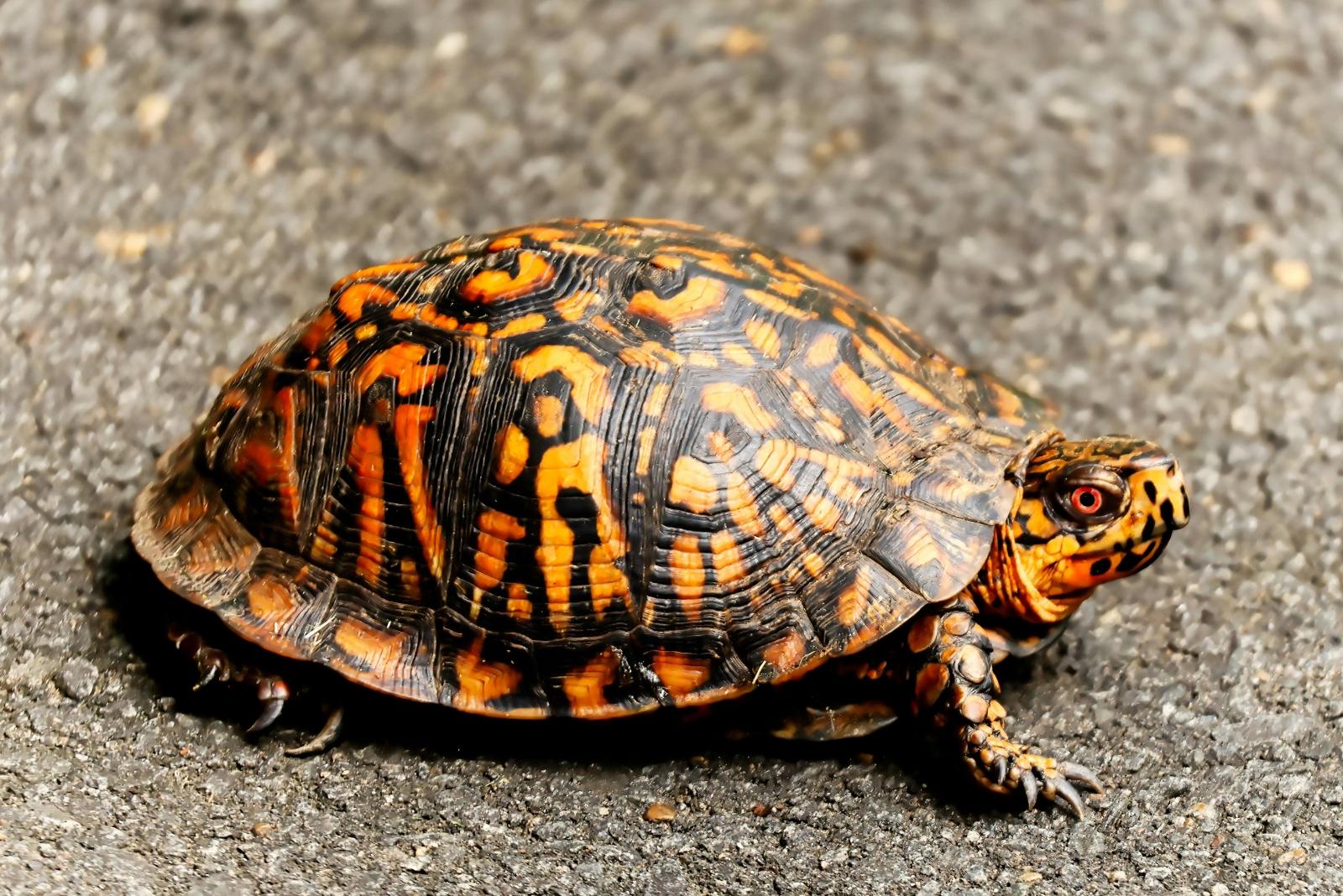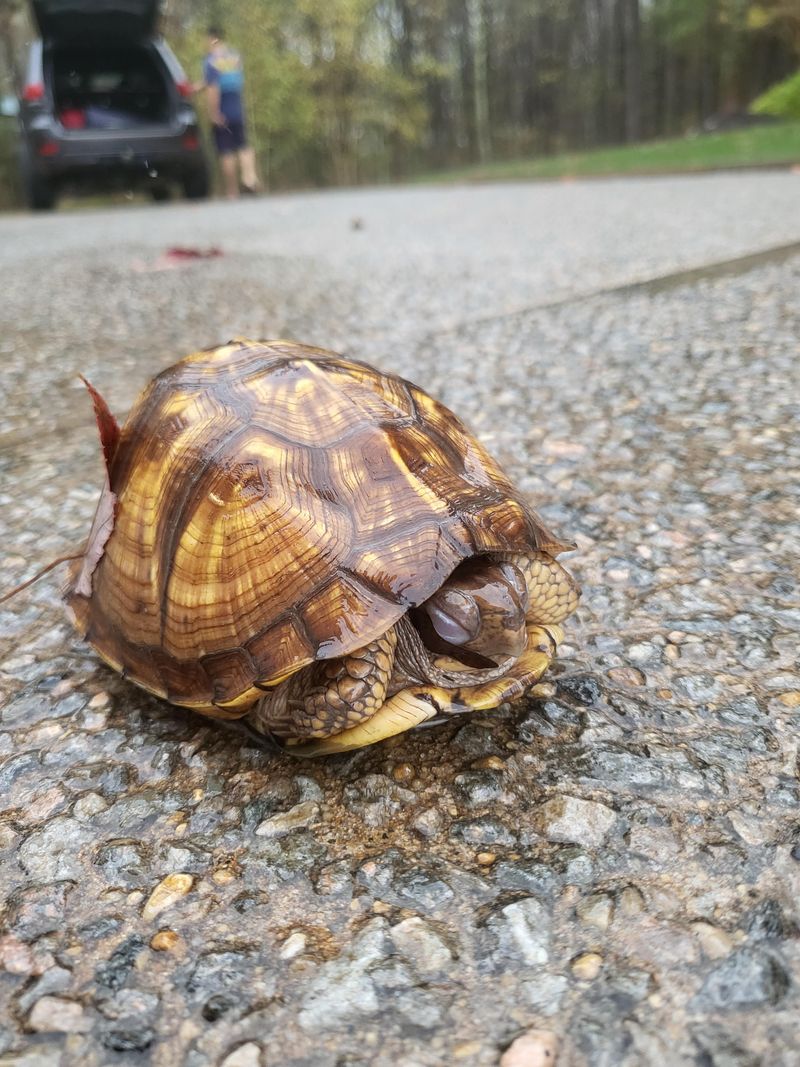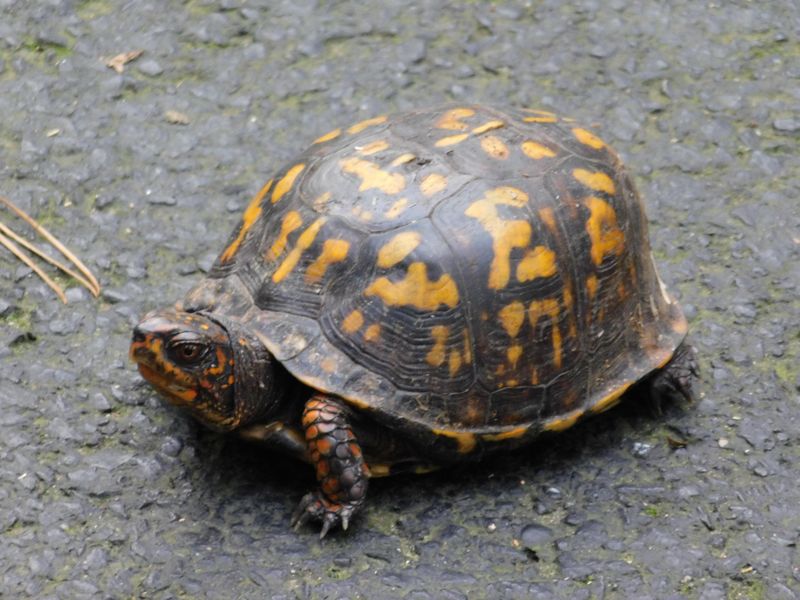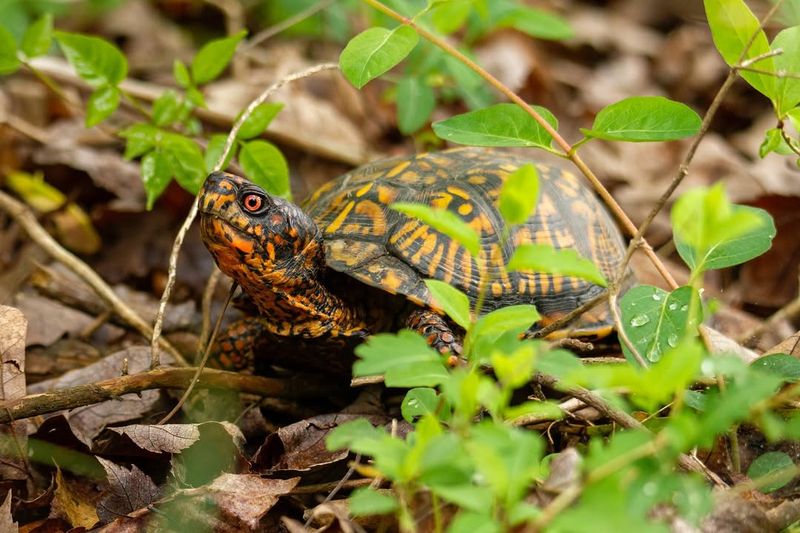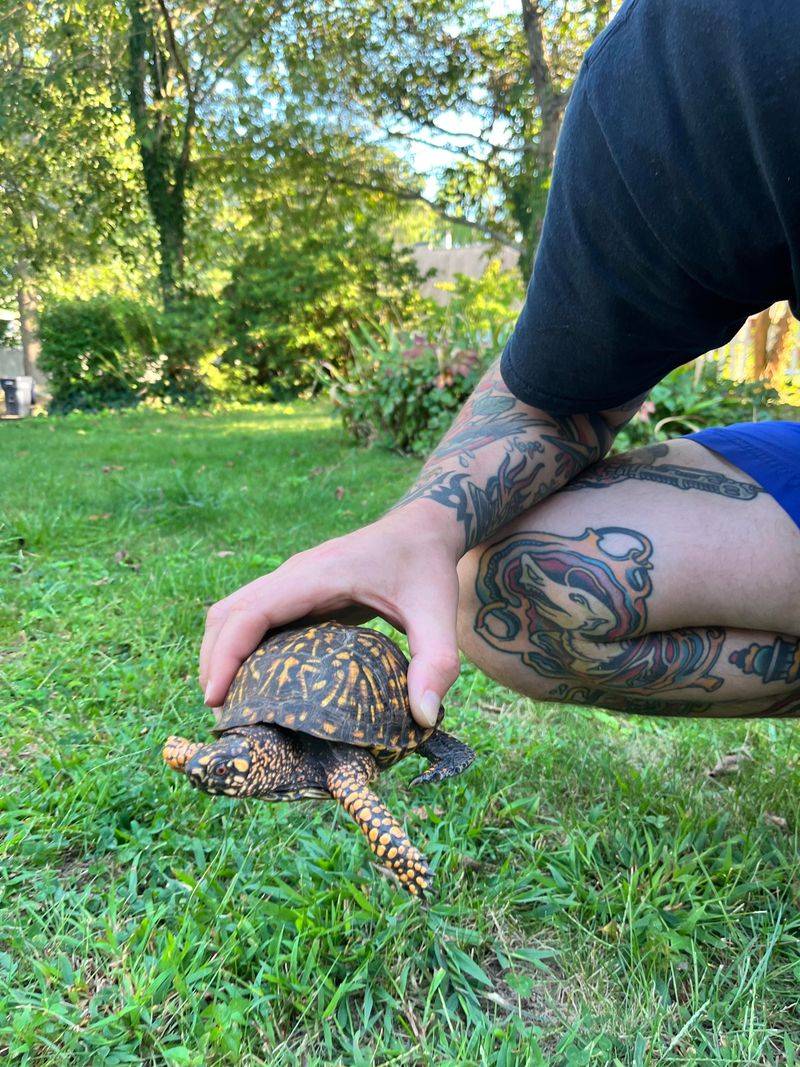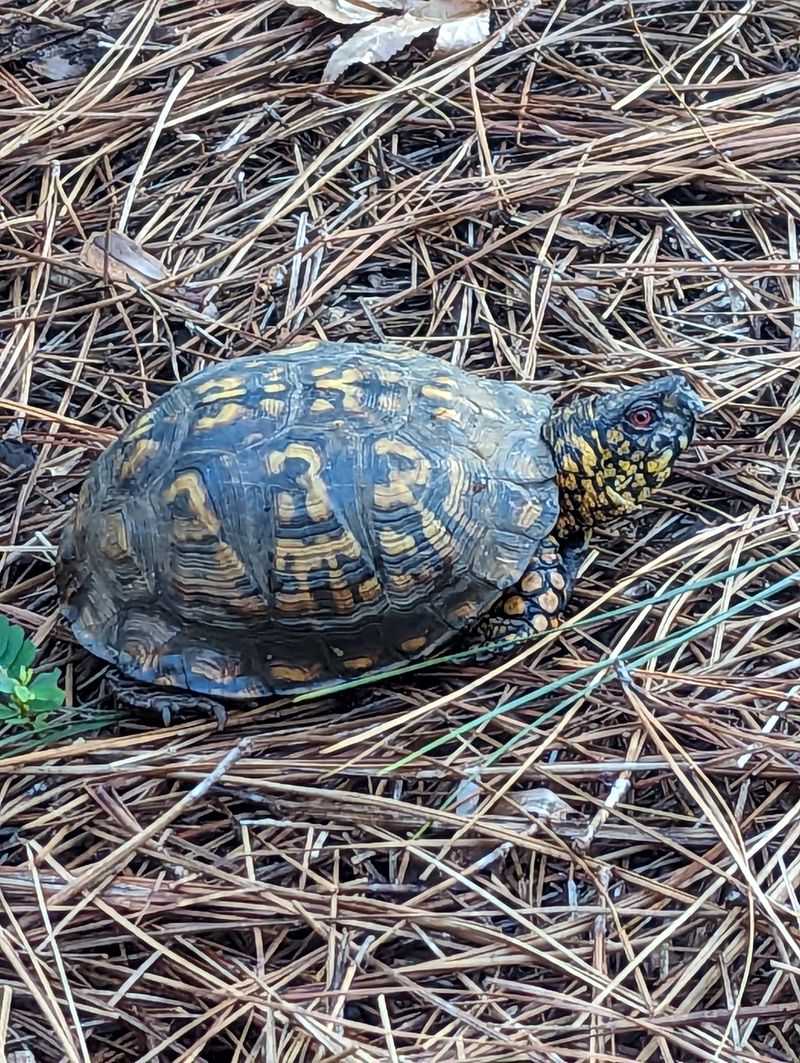A turtle in a Maryland yard often catches homeowners off guard, but quick, careful action matters. Some native species fall under state protection, and the wrong move can harm the animal or break wildlife laws.
Follow simple steps to keep the turtle safe and your property in the clear. Clear action and awareness keep Maryland’s turtles protected.
1. Observe From A Safe Distance First
Before rushing over, take a moment to watch the turtle from where you stand. Turtles can get stressed when humans approach too quickly, and some species might react defensively.
Keeping your distance also helps you identify what type of turtle you’ve found. Look at its shell shape, size, and colors without disturbing it.
Snapping turtles have powerful jaws and long tails, while box turtles are smaller with domed shells. Knowing the species determines your next steps.
2. Identify The Species Correctly
Maryland hosts about a dozen turtle species, and recognizing which one you’ve found is crucial. Eastern box turtles have high-domed shells with yellow or orange patterns, making them easy to spot.
Painted turtles feature red and yellow stripes on their skin and smooth shells. Snapping turtles are much larger with rough, ridged shells and prehistoric-looking faces.
Use a field guide or wildlife app to confirm the species. Proper identification helps you decide if the turtle needs assistance or should be left alone.
3. Check If The Turtle Needs Help
Not every turtle in your Maryland yard requires human intervention. Many are simply passing through on their way to food, water, or nesting sites.
Look for signs of injury like cracks in the shell, bleeding, or visible wounds. Watch how the turtle moves—healthy turtles walk steadily, while injured ones may drag themselves or appear lethargic.
If the turtle seems alert and active without obvious injuries, it probably doesn’t need rescuing. Sometimes the best help is no help at all, allowing nature to take its course.
4. Never Relocate Box Turtles Far Away
Box turtles have incredible homing instincts and know their territory extremely well. Moving one more than a few hundred feet can cause serious problems.
Relocated box turtles often spend the rest of their lives trying to return home, crossing dangerous roads and entering unfamiliar areas. This stress can lead to starvation or death.
If a box turtle is in your Maryland yard but not in danger, leave it alone. It knows where it’s going better than you do, even if that seems surprising!
5. Help Turtles Cross Roads Safely
Finding a turtle near a busy street means it might need your assistance getting across. Always move the turtle in the direction it was already heading, not where you think it should go.
For small turtles, pick them up with both hands on the sides of the shell. Snapping turtles require extra caution—grab them by the back of the shell near the tail, keeping your hands away from their head.
Work quickly but carefully, watching for traffic the entire time.
6. Provide Temporary Shelter If Necessary
Sometimes a turtle needs temporary housing while you contact Maryland wildlife experts. Use a cardboard box with air holes, lined with damp towels or newspaper.
Keep the box in a cool, quiet place away from pets and children. Don’t add water deep enough for drowning, but maintain some moisture.
Never keep the turtle longer than necessary—these are wild animals, not pets. Contact a wildlife rehabilitator within 24 hours to arrange proper care or release guidance for the specific species you’ve found.
7. Contact Maryland Wildlife Authorities
When you’re unsure what to do, Maryland has resources ready to help. The Department of Natural Resources offers guidance for wildlife encounters, including turtle situations.
Local wildlife rehabilitators can assess injured turtles and provide treatment. Many operate as volunteers and appreciate photos sent via text or email to help identify species before you arrive.
Keep contact numbers saved in your phone for future encounters. Quick access to expert advice can make all the difference in a turtle emergency situation.
8. Create A Turtle-Friendly Yard Environment
Once you’ve helped your turtle visitor, consider making your yard more welcoming for future guests. Turtles need water sources, so a shallow dish or small pond helps them stay hydrated.
Skip the pesticides and chemicals that can harm turtles through skin absorption. Leave some wild areas with leaf litter and logs where turtles can hide and hunt for insects.
Native plants attract the bugs turtles eat while providing natural shelter. Your turtle-friendly yard becomes a safe haven in an increasingly developed Maryland landscape.

